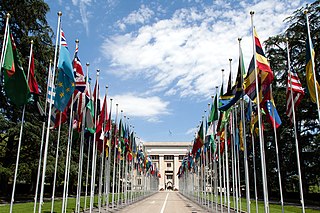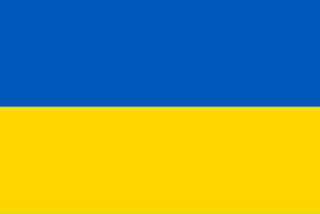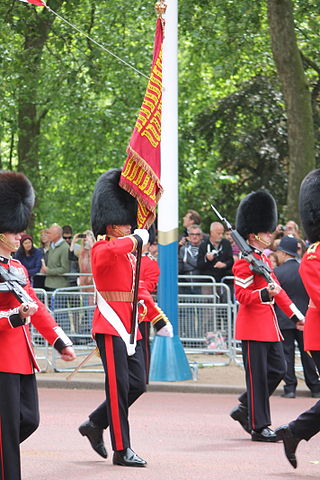
A flag is a piece of fabric with distinctive colours and design. It is used as a symbol, a signalling device, or for decoration. The term flag is also used to refer to the graphic design employed, and flags have evolved into a general tool for rudimentary signalling and identification, especially in environments where communication is challenging. Many flags fall into groups of similar designs called flag families. The study of flags is known as "vexillology" from the Latin vexillum, meaning "flag" or "banner".

The national flag of Sweden consists of a yellow or gold Nordic cross on a field of light blue. The Nordic cross design traditionally represents Christianity. The design and colours of the Swedish flag are believed to have been inspired by the present coat of arms of Sweden of 1442, which is blue divided quarterly by a cross pattée of gold. Blue and yellow have been used as Swedish colours at least since Magnus III's royal coat of arms of 1275.
In heraldry, tenné is a "stain", or non-standard tincture, of orange, light brown or orange-tawny colour.

Tinctures are the colours, metals, and furs used in heraldry. Nine tinctures are in common use: two metals, or and argent ; the colours gules (red), azure (blue), vert (green), sable (black), and purpure (purple); and the furs ermine, which represents the winter fur of a stoat, and vair, which represents the fur of a red squirrel. The use of other tinctures varies depending on the time period and heraldic tradition in question.

The national flag of Armenia, also known as the Tricolour, consists of three horizontal bands of equal width, red on the top, blue in the middle, and orange on the bottom. The Armenian Supreme Soviet adopted the current flag on 24 August 1990. On 15 June 2006, the Law on the National Flag of Armenia, governing its usage, was passed by the National Assembly of Armenia.

The flag of Barbados was designed by Grantley W. Prescod and was officially adopted to represent Barbados at midnight on 30 November 1966, the day the country gained independence.

A livery is an identifying design, such as a uniform, ornament, symbol or insignia that designates ownership or affiliation, often found on an individual or vehicle. Livery often includes elements of the heraldry relating to the individual or corporate body featured in the livery. Alternatively, some kind of a personal emblem or badge, or a distinctive colour, is featured.

The national flag of Lithuania consists of a horizontal tricolour of yellow, green, and red. It was adopted on 25 April 1918 during Lithuania's first period of independence (1918–1940), which ceased with the occupation first by the Soviet Union, and then by Nazi Germany (1941–1944). During the post-World War II Soviet occupation, from 1945 until 1988, the Flag of the Lithuanian SSR consisted first of a generic red Soviet flag with the name of the republic, in 1953 that was changed to the red flag with white and green bands at the bottom.

The national flag of Ukraine consists of equally sized horizontal bands of blue and yellow.

The coat of arms of Ukraine is a blue shield with a golden trident. It is colloquially known as the tryzub.

In military organizations, the practice of carrying colours, standards, flags, or guidons, both to act as a rallying point for troops and to mark the location of the commander, is thought to have originated in Ancient Egypt some 5,000 years ago. The Roman Empire also made battle standards reading SPQR a part of their vast armies. It was formalized in the armies of Europe in the High Middle Ages, with standards being emblazoned with the commander's coat of arms.

The following is a list of historical military colours, standards and guidons in different countries that do not exist today.
Light blue is a color or range of colors, typically a lightened shade with a hue between cyan and blue.

In heraldry and vexillology, a heraldic flag is a flag containing coats of arms, heraldic badges, or other devices used for personal identification.

An aircraft livery is a set of comprehensive insignia comprising color, graphic, and typographical identifiers which operators apply to their aircraft.

The royal standards of England were narrow, tapering swallow-tailed heraldic flags, of considerable length, used mainly for mustering troops in battle, in pageants and at funerals, by the monarchs of England. In high favour during the Tudor period, the Royal English Standard was a flag that was of a separate design and purpose to the Royal Banner. It featured St George's Cross at its head, followed by a number of heraldic devices, a supporter, badges or crests, with a motto—but it did not bear a coat of arms. The Royal Standard changed its composition frequently from reign to reign, but retained the motto Dieu et mon droit, meaning God and my right; which was divided into two bands: Dieu et mon and Droyt.

Varieties of the color blue may differ in hue, chroma, or lightness, or in two or three of these qualities. Variations in value are also called tints and shades, a tint being a blue or other hue mixed with white, a shade being mixed with black. A large selection of these colors is shown below.

The flag (standard) of the president of Ukraine is the official flag of the president of Ukraine.

Saint Javelin is an Internet meme and fictional character depicted in a religious icon style as a saint-like figure cradling a modern weapon used in the Russian invasion of Ukraine, such as the FGM-148 Javelin anti-tank weapon. The meme was created by Christian Borys during the 2022 Russian invasion of Ukraine and became famous around the world, eventually resulting in other similar memes. The meme boosted morale and was used in merchandise products, resulting in more than a million dollars raised for humanitarian charities assisting Ukraine.




















